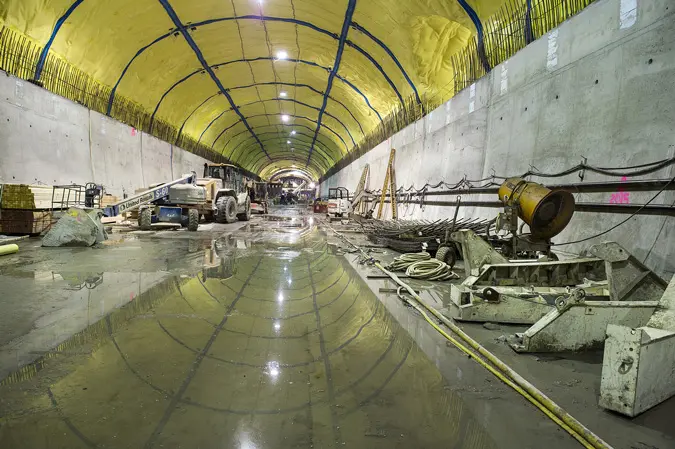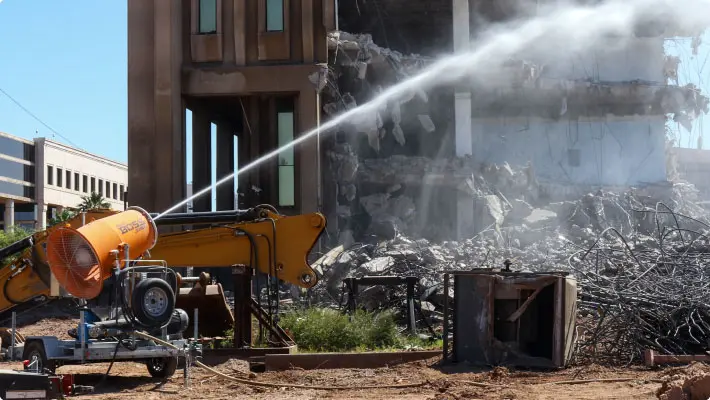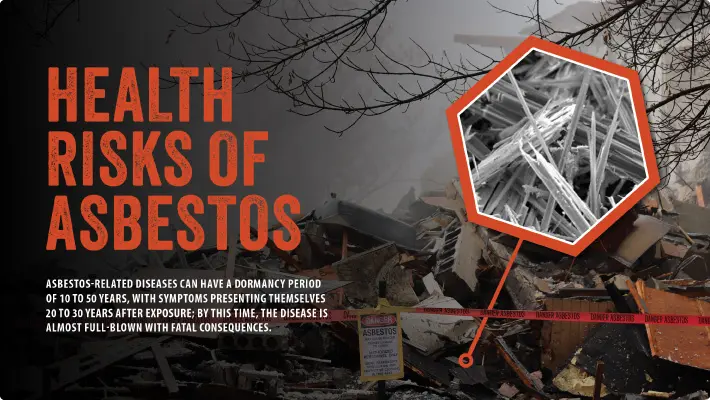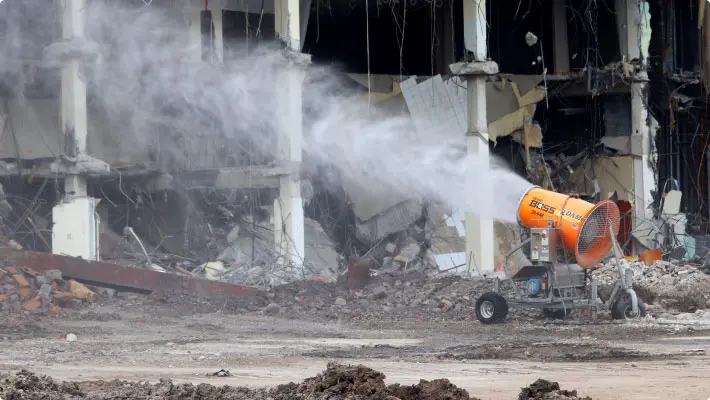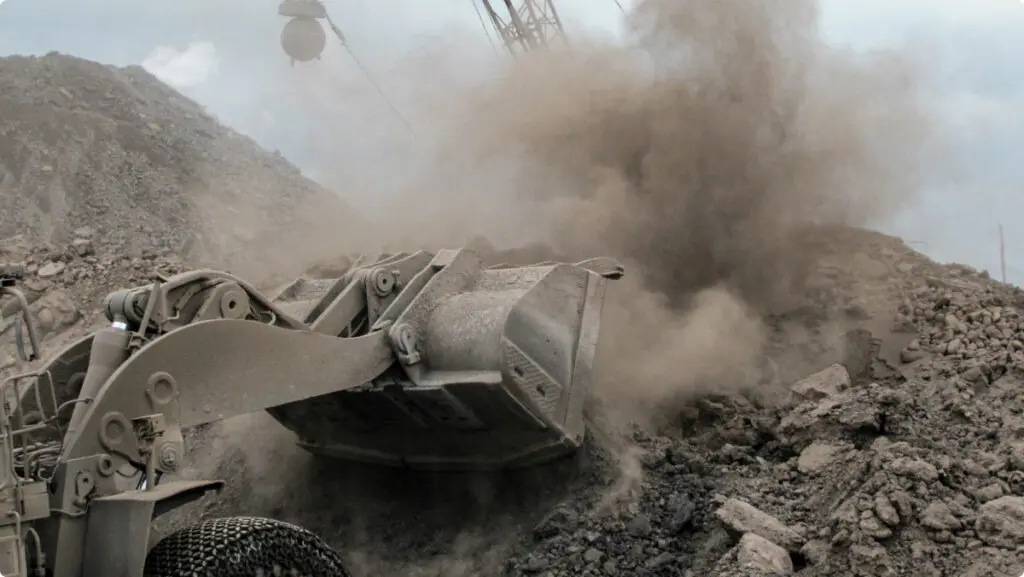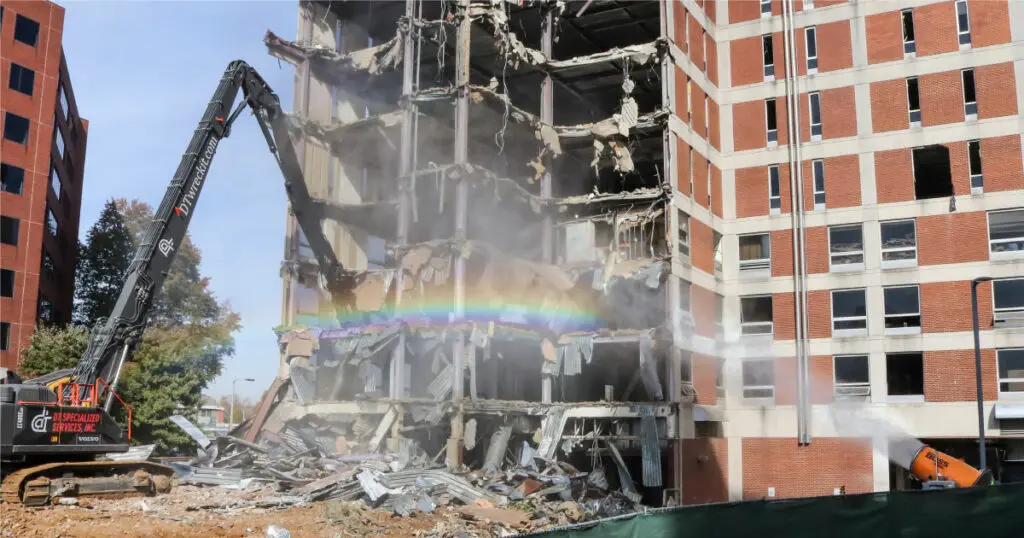One of New York’s leading heavy construction firms is smothering dust from underground blasting operations by using a network of high-performance dust suppression equipment as rough-in work for the Second Avenue Subway Project in Manhattan is being completed.
“When we blast, a tremendous amount of energy is released.
The force carries the dust away from the shot. If not contained, it would find its way out the tunnel and up the shafts, which could take it out to the street."
- Frank Townsend
SSK Project Coordinator
The series of four DustBoss machines has been credited with suppressing dust during execution of the $469 million contract awarded to SSK Constructors (Schiavone/Shea/Kiewit).
The company has been tasked with:
- Demolition of existing buildings to construct the station entrances and ancillaries.
- Mining of the 72nd Street Station Cavern, as well as shafts and adits for the entrances and ancillaries.
- Mining the G3/G4 tunnel to connect the 72nd Street Station to the existing stub tunnels at 63rd Street.
The work is all part of a planned $4.45 billion expansion of the New York City Subway System, expected to be completed in 2016.
“The technique we’re using is drilling and blasting, which is an effective way to dislodge large volumes of material at a time,” said SSK Project Coordinator Frank Townsend. “The potential drawback is that it creates dust and smoke, and since this is one of the busiest sections of the city, we knew we had to find effective dust control methods.”
Like most contractors, excavation crews had relied primarily on manual spraying with fire hoses to keep dust down in the past. “That’s a labor-intensive approach, often requiring several workers at a time, and it’s not as efficient,” Townsend said.
Townsend estimated that at a $100,000 annual cost per worker in New York City (counting benefits and insurance), the company may have been expending as much as $1 million per year for its attempts at dust management.
After investigating several equipment options, SSK decided to purchase four DustBoss machines.
The dust suppression equipment at the Second Avenue site is strategically positioned to maximize droplet exposure to airborne dust particles and increase hang time.
“When we blast, a tremendous amount of energy is released,” Townsend said. “The force carries the dust away from the shot, and if not contained, it would find its way out the tunnel and up the shafts, which could take it out to the street."
To accommodate the conditions, crews set up the DustBoss machines pointed in the same direction as the blast force travel, with two stationed at each of the vertical shafts.
“By aiming the DustBoss units along the path that the dust will travel, we give the atomized mist more time to collide with dust particles and drive them to the ground,” Townsend said.
The dust suppression equipment
SSK purchased three DB-60s dust control cannons, which employs a series of 30 specially-designed nozzles to atomize the water into droplets 50-200 microns in size, the optimum range for effective particle attraction.
Launched by a powerful 25 HP motor that generates 30,000 CFM (nearly 850 cubic meters per minute), the atomized spray has a range of more than 200 feet (approx. 60 meters), yet the carriage-mounted device is completely portable, allowing it to be located wherever it’s needed most on a given day.
The fourth machine in SSK’s repertoire is a DB-30, a smaller unit that’s well suited to confined spaces. Also mounted on a wheeled carriage, the DB-30 outperforms its size, capturing dust particles more effectively than many larger machines. The versatile unit has a 7.5 HP motor that generates 9,200 CFM, and like its bigger cousin, it features a ring of specially-designed nozzles that atomize the water supply to droplets between 50 and 200 microns in size.
“The DustBoss units have had a big impact on this project,” Townsend said. “Our air monitoring systems confirm the significant dust reduction. The equipment has been so successful, that we’re in the process of purchasing a fifth unit to use for demolition.”
CUSTOMER
Schiavone/Shea/Kiewit Constructors (SSK)
LOCATION
New York City, NY, USA
CHALLENGE
An underground construction for rough-in of the 2nd Avenue Subway Project in Manhattan created the need to find a way to suppress the dust from drilling and blasting in one of the busiest areas of New York City, trapping airborne particles and preventing their escape from underground tunnels.
SOLUTION
3 DB-60s and a DB-30.
RESULTS
The company credits the four strategically-placed machines with controlling dust during the $469 million project, eliminating the need to spend as much as $1 million per year on less effective manual control methods.
SSK CONSTRUCTORS
is a joint venture consisting of Schiavone Construction Co., J.F. Shea Construction Co. and Kiewit Corporation. The partners have been performing construction and rehabilitation of bridges, highways, secondary roads and subway systems for more than half a century. Many of the accepted construction practices for bridges and elevated roadways were pioneered by the firms, which remain among the industry’s most respected names in deep excavation and heavy construction.
One of New York’s leading heavy construction firms is smothering dust from underground blasting operations by using a network of high-performance dust suppression equipment as rough-in work for the Second Avenue Subway Project in Manhattan is being completed.
“When we blast, a tremendous amount of energy is released.
The force carries the dust away from the shot. If not contained, it would find its way out the tunnel and up the shafts, which could take it out to the street."
- Frank Townsend
SSK Project Coordinator
The series of four DustBoss machines has been credited with suppressing dust during execution of the $469 million contract awarded to SSK Constructors (Schiavone/Shea/Kiewit).
The company has been tasked with:
- Demolition of existing buildings to construct the station entrances and ancillaries.
- Mining of the 72nd Street Station Cavern, as well as shafts and adits for the entrances and ancillaries.
- Mining the G3/G4 tunnel to connect the 72nd Street Station to the existing stub tunnels at 63rd Street.
The work is all part of a planned $4.45 billion expansion of the New York City Subway System, expected to be completed in 2016.
“The technique we’re using is drilling and blasting, which is an effective way to dislodge large volumes of material at a time,” said SSK Project Coordinator Frank Townsend. “The potential drawback is that it creates dust and smoke, and since this is one of the busiest sections of the city, we knew we had to find effective dust control methods.”
Like most contractors, excavation crews had relied primarily on manual spraying with fire hoses to keep dust down in the past. “That’s a labor-intensive approach, often requiring several workers at a time, and it’s not as efficient,” Townsend said.
Townsend estimated that at a $100,000 annual cost per worker in New York City (counting benefits and insurance), the company may have been expending as much as $1 million per year for its attempts at dust management.
After investigating several equipment options, SSK decided to purchase four DustBoss machines.
The dust suppression equipment at the Second Avenue site is strategically positioned to maximize droplet exposure to airborne dust particles and increase hang time.
“When we blast, a tremendous amount of energy is released,” Townsend said. “The force carries the dust away from the shot, and if not contained, it would find its way out the tunnel and up the shafts, which could take it out to the street."
To accommodate the conditions, crews set up the DustBoss machines pointed in the same direction as the blast force travel, with two stationed at each of the vertical shafts.
“By aiming the DustBoss units along the path that the dust will travel, we give the atomized mist more time to collide with dust particles and drive them to the ground,” Townsend said.
The dust suppression equipment
SSK purchased three DB-60s dust control cannons, which employs a series of 30 specially-designed nozzles to atomize the water into droplets 50-200 microns in size, the optimum range for effective particle attraction.
Launched by a powerful 25 HP motor that generates 30,000 CFM (nearly 850 cubic meters per minute), the atomized spray has a range of more than 200 feet (approx. 60 meters), yet the carriage-mounted device is completely portable, allowing it to be located wherever it’s needed most on a given day.
The fourth machine in SSK’s repertoire is a DB-30, a smaller unit that’s well suited to confined spaces. Also mounted on a wheeled carriage, the DB-30 outperforms its size, capturing dust particles more effectively than many larger machines. The versatile unit has a 7.5 HP motor that generates 9,200 CFM, and like its bigger cousin, it features a ring of specially-designed nozzles that atomize the water supply to droplets between 50 and 200 microns in size.
“The DustBoss units have had a big impact on this project,” Townsend said. “Our air monitoring systems confirm the significant dust reduction. The equipment has been so successful, that we’re in the process of purchasing a fifth unit to use for demolition.”
Implement Dust Control at Your Jobsite!
Receive a FREE quote and talk to a dust control specialist today to stop fugitive dust!
Get A Quote
More on BossTek
Subscribe and Stay Up-to-Date!
Receive a monthly newsletter keeping you up-to-date on the latest in dust and odor control.
Subscribe
